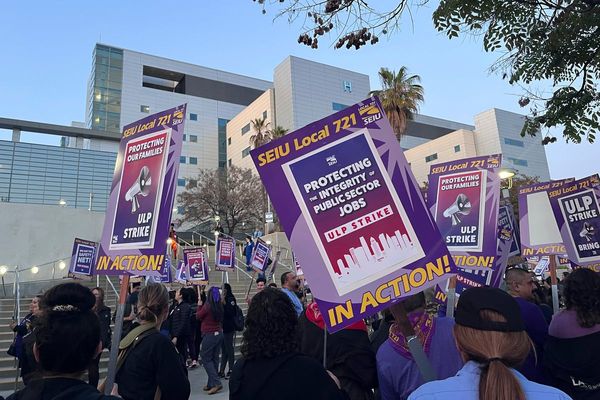
MANILA, Philippines – Saint Padre Pio is revered as a man of charity and piety.
Also known as the patron saint of civil defense volunteers, adolescents, and stress-relief, Saint Padre Pio’s life and works have inspired several devotees in the Roman Catholic Chruch from all over the world.
The incorrupt heart relic of Saint Padre Pio is set to visit the Philippines for the first time this Friday, October 5. It will be stationed in various provinces in the country until October 26.
"This will also be a 'time of grace' for the Filipinos, especially the devotees of Padre Pio, who are now walloping in near hopelessness during these uncertain times of our nation's history," said Father Joselin Gonda, rector of the National Shrine of Saint Padre Pio in Santo Tomas, Batangas.
With the visit, the Catholic Church hopes to inspire Christians to have a "forgiving heart" with the saint as a role model.
The Shrine of Padre Pio, declared by the Catholic Bishops' Conference of the Philippines as National Shrine in 2015, will be the first stop of the heart relic.
The relic will embark on a motorcade to the shrine on October 5, and will be displayed during Masses until October 7. It will be returning to the shrine again on October 18 to 26 after making other stops in Manila, Davao, and Cebu.
Here are some interesting facts to know about the famous saint:
1. He began his religious calling at an early age.
The man who was to become Saint Padre Pio was born Francesco Forgione on May 25, 1887 in Pietrelcina, Italy. He expressed his strong will to serve God from the age of 5, serving in the local parish as an altar boy.
He finally entered the Capuchin Friars Minor as novice at age 15, where he was given the name Pio or Pius. Three years later, he professed solemn vows of service.
Despite frail health throughout his studies, the young Pio persevered. He was eventually ordained as priest in 1910. He had been assigned to various areas until 1916, when he arrived in San Giovanni Rotondo in Italy. He resided in the city for the remainder of his life.
Even before his death in September 23, 1968, Padre Pio reportedly spent his last moments in prayer. He was beatified in 1999, and was canonized as saint on June 16, 2002 by the late Pope and now Saint John Paul II. He is known among Catholics as Saint Pio of Pietrelcina.
2. He manifested the stigmata.
Saint Padre Pio was known for having been granted the stigmata, or manifestations of bodily wounds that correspond to the crucifixion wounds of Jesus. Padre Pio claimed that he had first experienced the stigmata in 1910, but only for a short time.
The visible wounds reappeared – and stayed permanently – on September 20, 1918 after celebrating the Holy Mass at the Church of Our Lady of Grace in San Giovanni Rotondo in Italy.
Wounds reportedly appeared on his palms and feet, and he experienced excruciating pain similar to Christ’s passion. He was also said to have a wound on his side and lacerations on his shoulders.
According to accounts, blood from the stigmata smelled like perfume or roses – a phenomenon recognized by the Church as the odor of sanctity.
3. He established a hospital.
Saint Padre Pio understood the difficulties of physical pain and sickness, as he was frequently ill through most of his life. With the help of sponsors, he was able to fulfill his desire of building a hospital.
Casa Sollievo della Sofferenza, which means Home for the Relief of the Suffering, was inaugurated on May 5, 1956. The hospital sits atop a hill overlooking San Giovanni Rotondo, Italy.
Starting with only about 250 beds and just enough equipment, the hospital is now known for its state-of-the-art facilities and services.
4. He was said to perform miracles and ‘mystical’ abilities.
As a child, Padre Pio reportedly saw angels and spoke with holy entities, having visions of Jesus and Mary.
Aside from stigmata manifestations, Padre Pio was also remembered for having performed bilocation, the ability to appear in two places at once.
He was also known for his miracles of healing, such as the restoration of sight of Giovanni Savino, whose right eye had been blown out due to a dynamite blast, and the healing of a 14-year-old with severe back deformities due to typhoid fever in 1919.
5. His body is incorrupt.
40 years after his death, Padre Pio’s body was exhumed from the grave in March 2008. The exhumation follows the Roman Catholic Church’s standard practice on remains of saints for checking and for veneration as relics.
Saint Padre Pio’s body was found intact and not badly decayed despite the years that have passed. To cater to sensitivities of devotees, scientists have placed only a thin layer of silicone over the Saint’s face.
Many critics, however, still dispute claims of his incorrupt body.
His incorrupt body is now displayed in San Giovanni Rotondo in Italy. – Rappler.com







